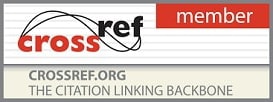
- Printed Journal
- Indexed Journal
- Refereed Journal
- Peer Reviewed Journal
Impact Factor: Impact Factor(RJIF): 5.3
International Journal of Home Science
2022, VOL. 8 ISSUE 2, PART B
Prevailing supplementary and weaning practices in children
Author(s): Pallavi Tomar, Verma Anisha and Prasad Ranu
Abstract:
Weaning (i.e., introduction of complementary foods) is a transitional process between the consumption of a unique food, milk, and family foods. The World Health Organization recommends the practice of exclusive breastfeeding of infants for the first 6 months after birth. Breastfeeding, the simplest, healthiest and least expensive feeding method that fulfils the infant‟s needs for nutrition and growth and it also reduces child morbidity and mortality. Although breastfeeding is a common practice in India, several factors like some cultural beliefs and misconceptions etc. affect poor breast-feeding practices. Most of the people do not properly understand the importance of the knowledge about breastfeeding how it should be given, the timings, duration, correct techniques and appropriate time of weaning mother‟s milk. However, more attention should be paid to aspects such as the timing of the introduction of the first complementary food, the addition of salt and sugar to baby meals and the introduction of potentially allergic foods. Appropriate weaning practice is the process of introducing soft, semisolid, and solid foods by the age of 6 months with age optimal minimum dietary diversity, minimum meal frequency and continued breast milk feeding.
Weaning (i.e., introduction of complementary foods) is a transitional process between the consumption of a unique food, milk, and family foods. The World Health Organization recommends the practice of exclusive breastfeeding of infants for the first 6 months after birth. Breastfeeding, the simplest, healthiest and least expensive feeding method that fulfils the infant‟s needs for nutrition and growth and it also reduces child morbidity and mortality. Although breastfeeding is a common practice in India, several factors like some cultural beliefs and misconceptions etc. affect poor breast-feeding practices. Most of the people do not properly understand the importance of the knowledge about breastfeeding how it should be given, the timings, duration, correct techniques and appropriate time of weaning mother‟s milk. However, more attention should be paid to aspects such as the timing of the introduction of the first complementary food, the addition of salt and sugar to baby meals and the introduction of potentially allergic foods. Appropriate weaning practice is the process of introducing soft, semisolid, and solid foods by the age of 6 months with age optimal minimum dietary diversity, minimum meal frequency and continued breast milk feeding.
Pages: 68-71 | 449 Views 210 Downloads

How to cite this article:
Pallavi Tomar, Verma Anisha, Prasad Ranu. Prevailing supplementary and weaning practices in children. Int J Home Sci 2022;8(2):68-71.





